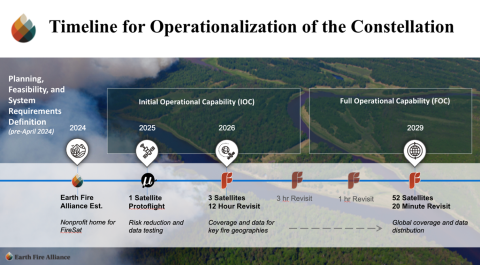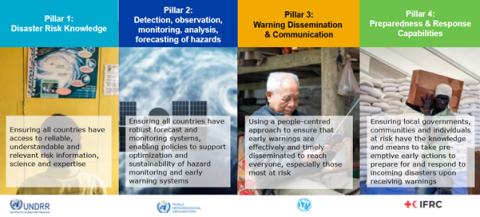


On 18 September 2025, Natural Hazards Research Australia (the Centre) hosted a global Knowledge Sharing Forum on multi-hazard public information and warning platforms. More than 300 participants from over 10 countries joined the event to hear from leading experts in disaster risk communication, emergency management, technology innovation, and international policy. The session explored what works, what does not, and where warning systems must go next. A consistent message emerged: warnings must be people-centred, trusted, and actionable. Technology offers powerful tools to supplement public information and warnings, but redundancy, clarity, and community trust remain the foundations of effective disaster communication.
The Knowledge Sharing Forum was a key deliverable of the Multi-hazard public information and warning platforms for the future project. The research project explores current and changing perceptions and use of multi-hazard public information and warning platforms among Australian communities. The research is focused on improving usability, message comprehension and accessibility for all communities, including specific community cohorts (e.g., people with culturally and linguistically diverse backgrounds, disabilities, and low digital literacy or access). The findings of the research will support the ongoing upgrades and design of existing platforms in Australia, as well as set the strategic direction for developing a national, all-hazard emergency warning app, as recommended by the Royal Commission into National Natural Disaster Arrangements in 2020. More widely, it will build a deeper understanding of community expectations and multi-hazard communication and warning needs, helping to frame future communication of hazard risks and warning information and the future use and development of multi-hazard public information and warning platforms.
The Knowledge Sharing Forum offered an opportunity for a global perspective on the design, use, challenges, and evolving mode and role of public information and warnings.
Centre CEO Andrew Gissing emphasised that communities want clear, simple, local information. People turn to multiple sources, including neighbours and social media, to fill gaps in official communication. Emergency managers face challenges such as declining trust in institutions and the difficulty of communicating unprecedented hazards, but opportunities exist in personalisation and interactivity for future public information and warnings.
Dr Jeannette Sutton (University at Albany; The Warn Room) offered three key insights for designing effective short-form messages such as Wireless Emergency Alerts (WEAs) in the US context:
Her research shows that complete, standardised messages, including hazard, location, time, impact, and protective guidance, are most effective. When asked whether content and order changes across countries, Dr Sutton made clear that 20 years of research suggests all of these message elements are required and while the ordering may change and they may add more information beyond hazard, location, time, impact, and protective guidance, there should be “no less information included”.
Dr Sutton shared that tools like FEMA’s IPAWS Message Design Dashboard can support practitioners in designing high-quality alerts. Also, The Warning Lexicon is a publicly available journal article for use within and outside the US for guidance on effective message design.
Warning lexicon: Sutton, J., Olson, M. K., Waugh, N. A. (2023) The Warning Lexicon: A Multiphased Study to Identify, Design, and Develop Contents for Warning Messages. Natural Hazards Review. 25(1). https://doi.org/10.1061/NHREFO.NHENG-1900
Access short-form message design advice from The Warn Room: The Warn Room | improving warning messages and alerts
Kia Wahl (Google) provided an overview of the public facing crisis response products available for use during natural hazards like bushfire and floods. Wahl outlined how Google Search and Maps integrate crisis response through Public Alerts and SOS Alerts, drawing directly from official response agency public information and warning content. Features of these tools include navigation warnings, fire boundaries, and curated safety tips. These tools surface authoritative, timely information when and where the community need it.
See more about what products Google offers for crisis response here:
Public Alerts | Google for Developers
Dr Karen O’Connor (Earth Fire Alliance) introduced Earth Fire Alliance, a global, community-led, nonprofit coalition dedicated to delivering transformative, near real-time data from all wildfires on Earth. Dr O’Connor focused on a key initiative of Earth Fire Alliance: FireSat, which offers a constellation of satellites dedicated to bushfire detection. FireSat can detect small emerging fires, differentiate active burns from past scars, and is working to deliver interoperable, real-time data to frontline agencies to guide operational response and support public information officers in determining where warnings need to be disseminated. The system aims to provide equitable global access to high-fidelity fire data.
Find out more here: Earth Fire Alliance

Anni Fordham CF (Department of Fire and Emergency Services, WA; AFAC Public Information and Warnings Group) declared at the outset that access to information during a natural hazard emergency is a human right. She argued that technology is a tool, not a strategy for ensuring that this human right is met. Using insights from her Churchill Fellowship, Fordham tackled the both the potential and the risks of technology. AI translation, drones, and automated systems can rapidly extend reach of public information and warnings, but disasters often disrupt the underlying infrastructure required for these to work. As a redundancy, low-tech methods and building relationships with communities continues to be valuable, particularly when digital infrastructure fails.
Read Anni Fordham’s Churchill Fellowship Report here: Anni Fordham - Churchill Trust
A/Prof Paula Dootson (QUT) introduced the Multi-hazard public information and warning platforms of the future project and invited attendees to participate by sharing their industry and agency reports on how platforms are being used by communities in their respective countries and jurisdictions. Preliminary insights were also shared from an ongoing systematic review of academic literature on public information and warnings platforms. Emerging insights included:
The future of public information and warnings is layered, not linear, with communities sitting at different stages of telecommunication, technology, and digital infrastructure maturity. Traditional channels will persist into the future. The growing influence of third-party actors (from commercial organisations to community-driven platforms) is set to both complement and challenge official agencies in their dissemination of warnings, while agencies also monitor for inconsistent or conflicting information from third-party actors.
After explaining the role of the World Meteorological Organization, Jochen Luther (World Meteorological Organization) placed the cumulative lessons from the prior Forum speakers within the context of the UN’s Early Warnings for All (EW4All) initiative. EW4All is built on four pillars: risk knowledge, detection and forecasting, dissemination and communication, and preparedness and response. Significant progress has been made to embed early warnings, but gaps remain in data sharing, monitoring, and sustainable funding, especially in least developed countries and small island states. Luther stressed that international cooperation is vital: “Early warning systems save lives, but only if they reach people, in forms they can trust and act upon”. Luther also stressed the importance of providing even a 24-hour warning of an impending hazardous event, which can cut resulting damage by 30 percent, saving billions of dollars annually for the affected jurisdiction.
Read more about Early Warnings for All here: Early Warnings for All

The Forum demonstrated the appetite for international collaboration on disaster warnings, attracting 315 registrations from more than 10 countries. Participants included researchers, emergency managers, policymakers, and technology experts. The event advanced global dialogue on multi-hazard platforms and will inform the ongoing co-design of the Multi-hazard public information and warning platforms of the future project.
The project would like to acknowledge the generous contributions of the speakers involved in the Knowledge Sharing Forum: Andrew Gissing, Dr Jeannette Sutton, Anni Fordham CF, Kia Wahl, Dr Karen O’Connor, A/Prof Paula Dootson, and Jochen Luther. Their expertise and insights shaped the discussion and highlighted both the opportunities and challenges in developing effective multi-hazard warning platforms.
We also acknowledge the project research team, including A/Profr Paula Dootson, Professor Amisha Mehta, Prof Dominique Greer, Dr Scott Murray (QUT); Dr Erica Kuligowski, Dr Amy Griffin, Dr Rosie Morrison (RMIT University); Dr Gabi Mocatta, Dr Darryl Stellmach (University of Tasmania); Dr Jonathan Abrahams, Professor John Grundy, John Gilbert (Monash University); and Dr Chloe Begg (CFA Victoria). We deeply value our Steering Committee of Katelyn Sampson (AIDR), Carla Mooney (BOM), Rachel Guy (CFS), Reegan Key (EMV), Anni Fordham CF (DFES), Kath Ryan (QFD), Lara Wedding (Natural Hazards Research Australia), and Vana Demetriou (Natural Hazards Research Australia) and Blythe McLennan (formerly Natural Hazards Research Australia, now AIDR), who supported the project inception and design.
Special thanks are extended to the Natural Hazards Research Australia team, specifically Joanna Wood, Ainsley Burgess, and Vaia Smirneos, for their support in coordinating the Forum.
Watch the recording below.
Begg, C., Gardner, A., Griffin, A., Dootson, P., Kuligowski, E., & Neale, T. (2024). The challenges of research utilisation and the risks of collaborative research. The Australian Journal of Emergency Management, 39(4), 90-92. The challenges of research utilisation and the risks of collaborative research | The Australian Journal of Emergency Management
Begg, C., Gardner, A., Kuligowski, E., Griffin, A., Dootson, P., Neale, T., & Dwyer, G. (2022). Co-designing predictive maps for community use during a bushfire. The Australian Journal of Emergency Management, 37(4), 63-64. Co-designing predictive maps for community use during a bushfire | The Australian Journal of Emergency Management
Cain, L., Sutton, J, Olson, M., Waugh, N., Bertola, E.J. (2025). Missing information: A content analysis of U.S. missing persons alerts using the missing and endangered persons message framework. Police Practice and Research. 1-28. https://doi.org/10.1080/15614263.2025.2530445
Gelt, L., Rumsewicz, M., & Tran, R. (2024). Severe Weather Impact Prediction Sector Partner Engagement Final Report. Natural Hazards Research Australia. Sector partner engagement to enhance severe weather impact predictions | Natural Hazards Research Australia
Mileti, D.S., & Sorensen, J.H. (1990). Communication of Emergency Public Warnings A Social Science Perspective and State-of-the-Art Perspective. U.S. Department of Energy Office of Scientific and Technical Information. Communication of emergency public warnings: A social science perspective and state-of-the-art assessment (Technical Report) | OSTI.GOV
Parker, A.M., Steratore, R., Bradley, M.A., Laforce, S., Woods, D., Setodji, C.M., Hassler, G.W., Tierney, D., Villegas, C.A., Cecchine, G., Jackson, B.A., Story, C., Wilson, K.A., Ahmadi, M., & Osburg, J. (2024). Assessing Public Reach of the 2023 National Test of the Wireless Emergency Alerts (WEA) System Results of a National Survey. Homeland Security Operational Analysis Center. Assessing Public Reach of the 2023 National Test of the Wireless Emergency Alerts (WEA) System: Results of a National Survey | RAND
Sutton, J., Olson, M.K., Walpole, H., Cain, L.B., Waugh, N., & Wood, M.M. (2025) The complete message is the best message: The case for standardizing Wireless Emergency Alerts. Natural Hazards Review, 26(3). https://doi.org/10.1061/NHREFO.NHENG-2293
Sutton, J., Olson, M. K., Waugh, N. A. (2023) The Warning Lexicon: A Multiphased Study to Identify, Design, and Develop Contents for Warning Messages. Natural Hazards Review. 25(1). https://doi.org/10.1061/NHREFO.NHENG-1900
Sutton, J., Walpole, H.D., Olson, M., Cain, L., Olivas, S., Pollock, B., & Waugh, N. (in press) The Post-Alert Message Lexicon. Natural Hazards Review.
Sutton, J., & Wood, M.M. (2025). Opting Out: Over-Alerting and Warning Fatigue in the Era of Wireless Emergency Alerts. Journal of Contingencies and Crisis Management, 33(3), e70076. https://doi.org/10.1111/1468-5973.70076
Taylor, M., Miller, F., Johnston, K., Lane, A., Ryan, B., King, R., Narwal, H., Miller, M., Daba, D., & Simon, H. (2023). Community experiences of the January – July 2022 floods in New South Wales and Queensland Final report: Policy-relevant themes. Natural Hazards Research Australia. Community experiences of the 2022 Australian floods - Queensland and New South Wales | Natural Hazards Research Australia
United Nations Office for Disaster Risk Reduction and World Meteorological Organization (2024). Global Status of Multi-Hazard Early Warning Systems. Geneva, Switzerland. Global status of multi-hazard early warning systems 2024 | UNDRR
Walpole, H.D., Sutton, J., & Olson, M. (2025). Are we safe yet? Experimental analysis of emergency post-alert messages. International Journal of Disaster Risk Reduction, 128(1). 105753. https://doi.org/10.1016/j.ijdrr.2025.105753